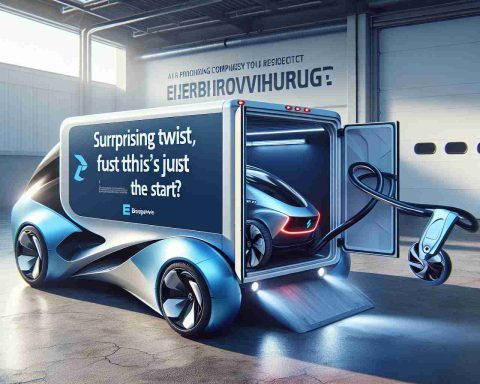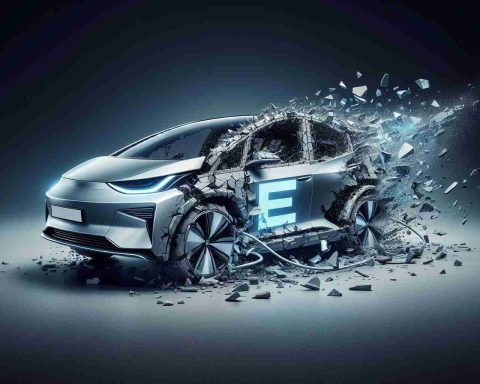Exploration meets innovation in Western Australia. Western Australia’s electric vehicle (EV) charging network has gained recognition as an essential part of the state’s tourism and sustainability efforts. Acknowledged by the New York Times as one of the “52 Places To Go This Year,” this network promises a bright future for eco-conscious travelers.
However, numerous EV owners have expressed significant concerns regarding the functionality of this so-called “electric highway,” which is intended to connect Kununurra in the north with Mundrabilla in the south. Reports indicate that many charging stations experience frequent outages, causing frustration for users. For instance, a representative from the WA Tesla Owners Club noted that chargers often remain out of service for extended periods.
Moreover, despite a substantial $21 million investment aimed at improving the network, the maintenance of these chargers poses a challenge. Officials have attributed some issues to vandalism in remote locations, which only exacerbates the problem. A recent incident at a roadhouse charger on the Nullarbor Plain left an EV owner stranded after a blackout disrupted power supply.
In addition to these reliability issues, local rental agencies remain hesitant to adopt EVs into their fleets, citing inadequate infrastructure and consumer apprehension. While some rental services in Perth offer electric options, the lack of widespread viable charging stations on major travel routes raises significant concerns for potential customers.
Western Australia stands at a crossroads; the enthusiasm for electric travel is undeniable, yet practical challenges need to be addressed for the state to fully embrace a sustainable future.
Implications of Western Australia’s Evolving Electric Vehicle Landscape
The evolution of Western Australia’s electric vehicle (EV) charging infrastructure extends beyond enhancing local tourism; it has profound implications for society, culture, and the global economy. As eco-friendly travel becomes more mainstream, regions like Western Australia are reshaping definitions of accessibility and sustainability. The promotion of an electric highway enhances the state’s image as a pioneer of environmentally conscious travel, reflecting a growing cultural shift toward sustainability. Such an initiative could inspire other remote regions worldwide to develop similar infrastructures, potentially transforming tourism sectors globally.
However, the challenges faced in implementing this technology, from reliability issues to infrastructural hesitance from rental agencies, reveal a troubling reality. While boosting tourism through eco-friendly initiatives is commendable, the economic viability hinges on robust infrastructure maintenance and a reliable service network. Long-term investments in technology and local expertise are essential to mitigate these issues, essentially ensuring that tourists’ expectations match the reality of their travel experience.
Looking forward, there is a pressing need to examine potential environmental impacts. Electric vehicles, while inherently cleaner than their fossil-fuel counterparts, still rely on a power grid that may utilize non-renewable energy sources. Thus, the commitment to sustainable energy generation must accompany this shift toward EV infrastructure. As Western Australia endeavors to navigate these complexities, its ability to adapt will determine its success in leading a sustainable future for electric travel.
Western Australia’s Electric Highway: Promise or Pitfall?
Introduction
Western Australia’s electric vehicle (EV) charging network has been spotlighted as a crucial aspect of the state’s tourism and sustainability initiatives. Recognized by the New York Times in their list of “52 Places To Go This Year,” this network aims to cater to eco-conscious tourists traversing its vast landscape. However, recent challenges have emerged that may hinder its progress. This article explores the current state of EV infrastructure in Western Australia, its pros and cons, and the path forward.
Features of the Electric Vehicle Charging Network
The Western Australia electric vehicle charging network was designed to connect key destinations from Kununurra in the north to Mundrabilla in the south. Some of the notable features include:
– Fast-Charging Stations: A series of rapid chargers are positioned along major travel corridors, designed to facilitate quick recharges for travelers.
– Tourism Integration: Charging stations are often located near popular tourist attractions, allowing for an eco-friendly travel experience.
– Sustainability Goals: The initiative aims to reduce greenhouse gas emissions and align with global sustainability targets.
Use Cases
The electric highway has potential benefits for various user groups:
– Tourists: Eco-conscious travelers can journey across the region in EVs while minimizing their carbon footprint.
– Local Residents: Residents can access affordable and eco-friendly transportation options, promoting the use of electric vehicles in daily life.
– Businesses: Local businesses could attract visitors by providing charging facilities, thus enhancing their customer base.
Pros and Cons
# Pros:
– Tourism Boost: Encourages eco-tourism and extends the travel season due to EV-friendly infrastructure.
– Environmental Benefits: Promotes the use of EVs, contributing to a net reduction in emissions.
– Investment: Significant financial backing (over $21 million) demonstrates commitment from local governments to support green initiatives.
# Cons:
– Infrastructure Reliability: Frequent outages and off-service charges reduce user trust. Notably, reports of a stranded EV owner due to a blackout underscore the fragility of this system.
– Vandalism: Challenges with maintaining charging stations in remote locations have arisen, with some officials citing vandalism as a frequent issue.
– Rental Market Hesitancy: Local rental agencies are cautious about adopting EVs into their fleets, reflecting consumer anxieties regarding the reliability of charging infrastructure.
Market Analysis and Trends
With the increasing global shift towards electric vehicles, Western Australia’s EV charging network reflects both market trends and necessary adaptations. According to projections, the demand for EV charging stations is expected to grow as the number of electric vehicles on the road increases. However, addressing existing infrastructure shortcomings is vital for maintaining growth.
Innovations and Future Predictions
To enhance the functionality and sustainability of the electric highway, several innovations and strategies might be considered:
– Predictive Maintenance: Implementing IoT sensors at charging stations could enable real-time monitoring and predictive maintenance to address outages promptly.
– Partnerships with Private Sector: Collaborating with private enterprises may aid in funding and maintaining charging infrastructure, reducing the burden on public resources.
– Expansion of Charging Networks: Strategic investments in more urban and rural locations will increase accessibility, building consumer confidence.
Conclusion
Western Australia’s efforts to build an electric highway illustrate a pioneering approach to sustainable travel. However, the current challenges necessitate immediate attention to improve reliability and expand infrastructure. With targeted innovations and comprehensive strategies, the state can enhance its reputation as a leader in eco-friendly travel, paving the way for a greener future.
For more insights about sustainability and travel initiatives, visit Western Australia Tourism.









